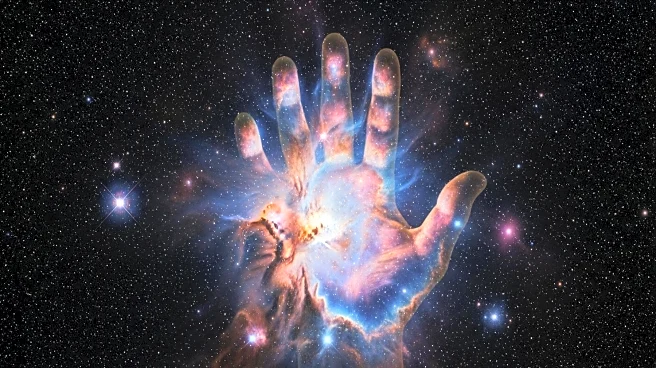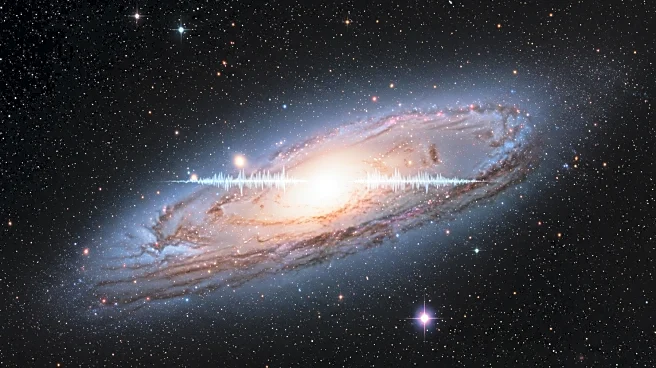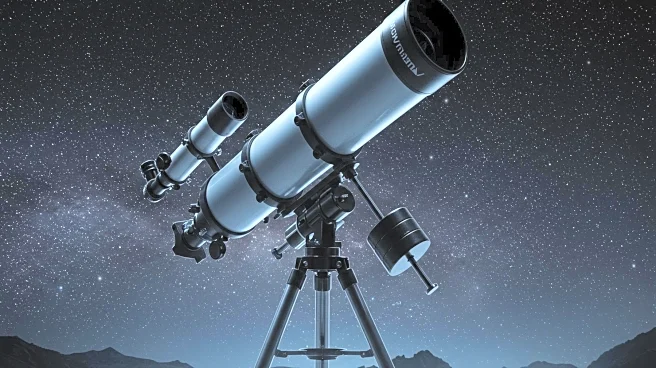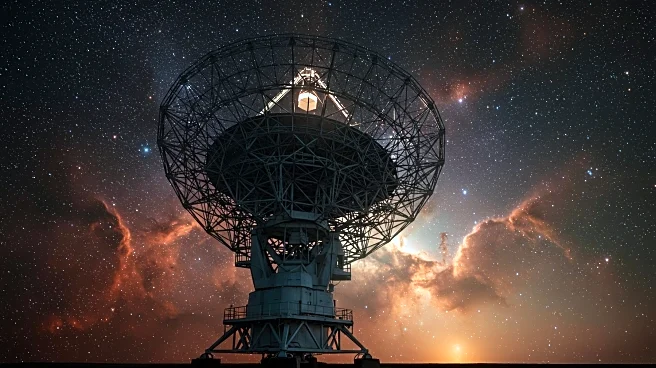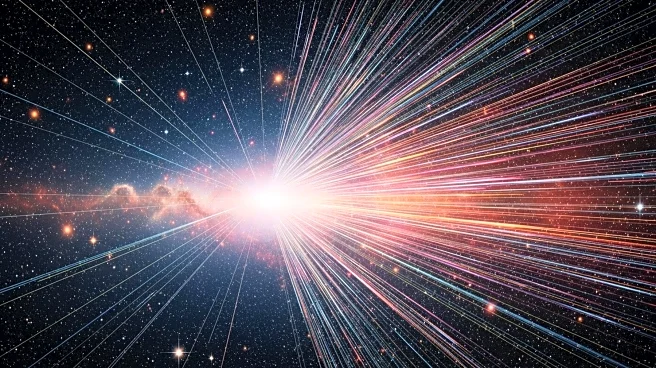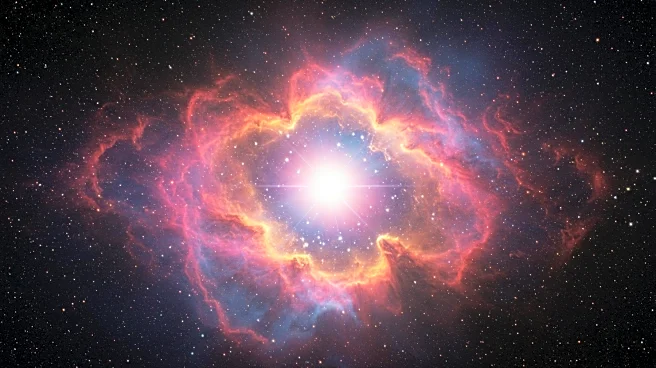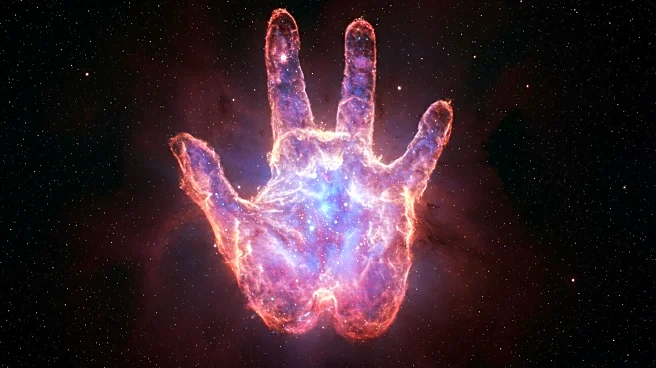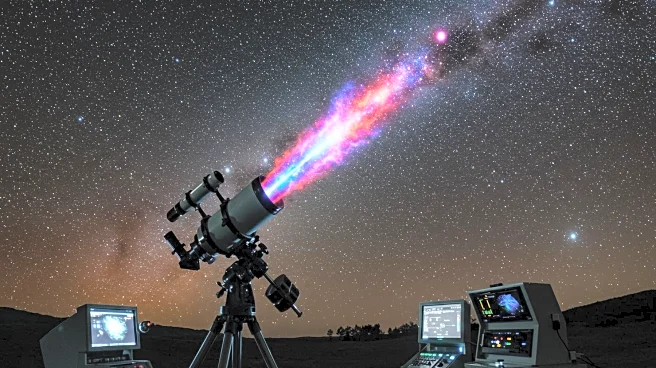Rapid Read • 6 min read
Astronomers have captured a new view of the nebula MSH 15-52, powered by pulsar B1509-58, which resembles a human hand. The pulsar, formed from a supernova explosion, spins rapidly and has a strong magnetic field, accelerating particles to extreme energies. These particles drive winds that carve the nebula into its hand-like form. The nebula spans over 150 light-years and is part of the supernova remnant RCW 89.
The discovery of the 'hand-shaped' nebula provides insights into the interactions between pulsars and supernova debris, revealing the complex processes that shape cosmic structures. Understanding these interactions helps refine models of nebula formation and evolution, contributing to the broader field of astrophysics. The study highlights the importance of combining data from different telescopic sources to gain a comprehensive view of cosmic phenomena.
AD
The 'hand-shaped' nebula exemplifies the intricate beauty of cosmic structures formed by stellar explosions. The study of such nebulae underscores the importance of multiwavelength observations in astrophysics, allowing researchers to explore the dynamic interactions between pulsars and surrounding material. This approach enhances our understanding of the universe's complexity and the forces shaping its evolution.
AD
More Stories You Might Enjoy
